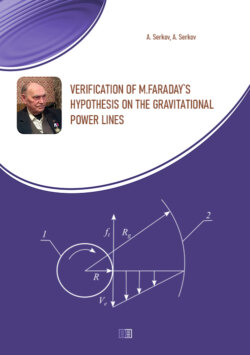Читать книгу Verification of M.Faraday's hypothesis on the gravitational power lines - А. Т. Серков - Страница 5
Chapter 1. The gravitational field of fixed and rotating bodies
2. The properties of the physical vacuum
ОглавлениеIn addition to continuity properties and properties when the "vacuum fluctuations, introducing virtual particles may exert pressure on the body," described in the literature [2], based on indirect evidence suggests that the physical vacuum is a viscous-elastic body whose properties can be characterized by the value of modulus and viscosity coefficient.
In materials science for objects with extremely high elastic properties are widely used methods for determining the modulus of elasticity of materials on the propagation velocity of ultrasonic waves. The higher the speed of propagation of ultrasound is the higher modulus material. The velocity of propagation of electromagnetic and gravitational radiation in the physical vacuum is very high, respectively, 2,998.10*10 and 2,3.10*8 cm / s. Consequently, we can assume that the physical vacuum as the medium in which the radiation propagates, has a high modulus of elasticity.
As for the viscous properties of the physical vacuum, they are similar to the rotational viscometer can be detected by slowing the speed of rotation of celestial bodies. Be reliably defined for the Earth and is about 0,001s for 100 years. This is secular slowing down the speed of rotation of the Earth. It is usually explained by the action of tidal forces of the Moon and the Sun. However, the inhibitory effect of the viscosity of the physical vacuum (physical environment) is also quite likely.
Another well-known fact testifies to delay the speed of rotation of celestial bodies in the process of evolution – a decrease in the rate of rotation of stars in the Main sequence. It is assumed that at the initial stage of evolution the equatorial rotation speed of the stars reaches 10 – 100 km / s. At the stage at which the Sun is located, it is 2 km / s, and continued to decrease until the release of the Main sequence.
Consider the possibility of quantifying the approximate viscous braking of the rotating cosmic body due to its shear interaction with the physical environment (physical vacuum).
Figure 1 show a diagram of this interaction, which can be used to calculate the "viscosity" of the physical vacuum. Rotating cosmic body (1) with a radius R slows its rotation under the effect of tangential force f, which is caused by the viscous resistance of the surrounding physical environment (physical vacuum). The linear velocity of the medium at the equator is the linear velocity of the body v. As the distance from the center of the body linear velocity of the medium due to its viscosity decreases to zero at the boundary of the action of the gravitational field of a rotating body at a distance Rg. To calculate the viscosity can use the Newton's law:
f = μ. (Δv / ΔR). s, (1)
where f – tangential force, causing the shear of the physical environment, μ – viscosity coefficient, Δv / ΔR – velocity gradient and s – area of the layer on which there is a shear.
Using the expressions (1) to and date on the slow the rotation speed of the Earth earlier [3] was calculated the viscosity of the physical vacuum and then after the resulting viscosity a value was estimated the deceleration of the Sun rotation speed.
Fig. 1. Scheme of braking speed rotation of the cosmic body due to the viscosity of the physical vacuum: 1 – rotating body, 2 – border effect of the gravitational field of a rotating body, f – tangential braking force, v – equatorial velocity, R – radius of the body, Rg – radius of the sphere of action of the gravitational field formed body.
Also, based on indirect evidence can be seen on the property of the physical vacuum, undergo longitudinal and shear deformation. Moreover, due to the high modulus tensile longitudinal strain apparently is small. Shear deformation occurs during the formation of gravitational waves, which, by analogy with electromagnetic are apparently cross.
